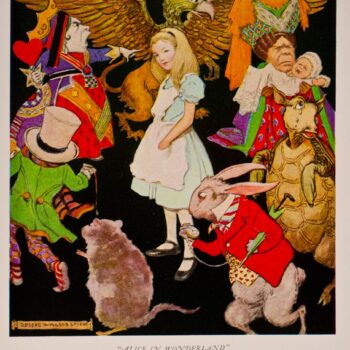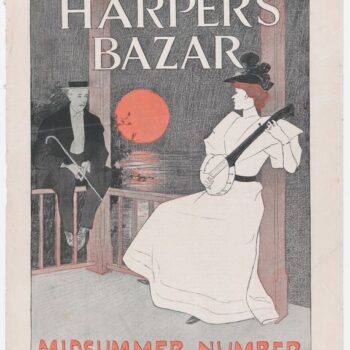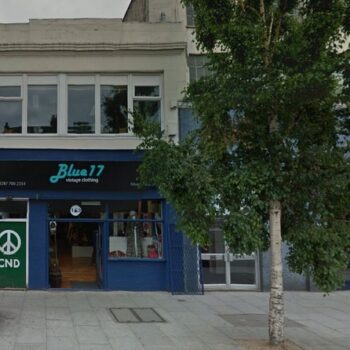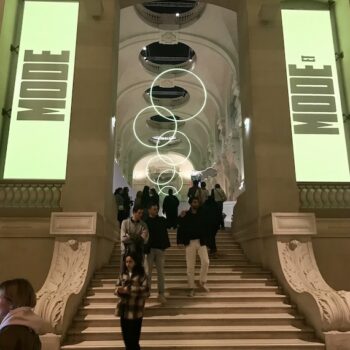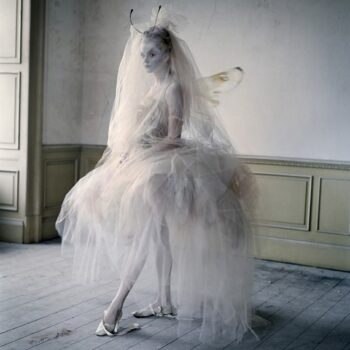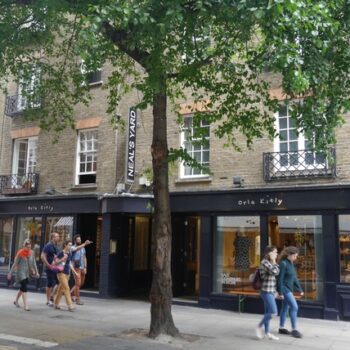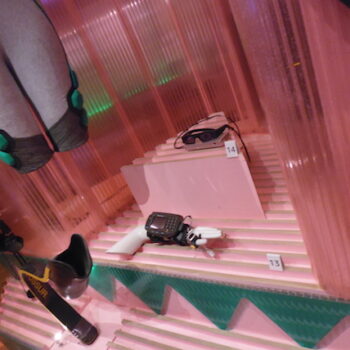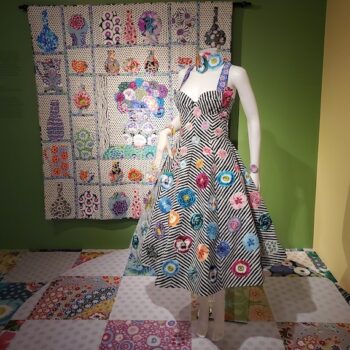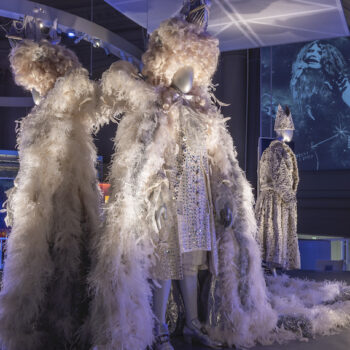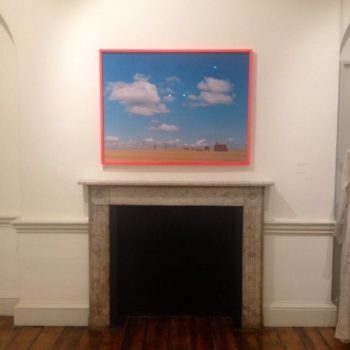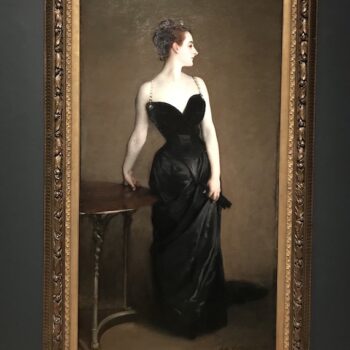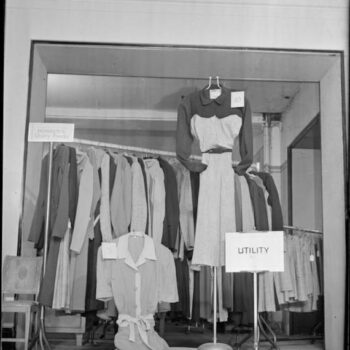Review – Rebel: 30 years of London Fashion at the Design Museum
February 7, 2024London Fashion at the Design MuseumReview – Rebel: 30 years of London Fashion at the Design Museum. London has always had a reputation as the coolest, most creative city for fashion, and London Fashion Week the liveliest. I think it is the combination of a great clubbing scene, a willingness to not let low budgets stifle creativity, and a very nurturing educational environment – Louise Wilson at Central Saint Martin’s was key. After Uni comes, if you are lucky, NewGen sponsorship.
The British Fashion Council’s NewGen programme gives a platform and support for newly hatching designers, and though they offer business advice alongside money and practical help, they do not try to push designers into conservative design avenues, recognising, no doubt, that the crazy ideas are both authentic expression and also very good branding for future commercial reputations. This exhibition celebrates London fashion and NewGen’s contribution to it since the 90s. The roster of designers featured is huge – over 100 – and includes every big name from the London scene in the last 30 years you can think of, including Christopher Kane, W Anderson, Wales Bonner, Erdem, Molly Goddard, and Simone Rocha.
London Fashion at the Design Museum – Sponsored by Alexander McQueen
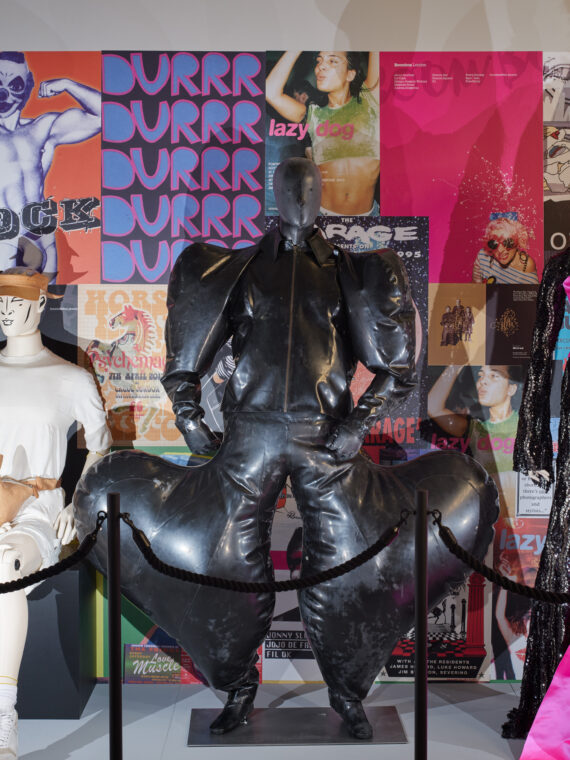
REBEL 30 Years of London Fashion. Photo with Design Museum permission, Andy Stagg.
The London Fashion Design Museum exhibition is sponsored by the Alexander McQueen brand, which is apt. There is a room celebrating Lee Alexander McQueen’s early years and first collection. His flatmate at the time, Simon Ungless, narrates his recollections in voiceover, about how McQueen used to cut out the clothes on the carpet, as well as hide his face from the press as he was on the Dole at the time. There are three of these early pieces on show too – bumsters, a jacket, and a half-kimono, half structured jacket.
The decoration – bleach, screen prints and gold spray paint – is so endearing to me. I used to cut out clothes on the carpet! I used to use spray paint too! It’s actually very good for applying decoration to clothes. (In fact, an info card earlier in the show next to a Mary Katrantzou dress explains how at St Martin’s the only approved technique when she was there in 2008 was screen print, and the tutors were pretty shocked at her use of digital print).
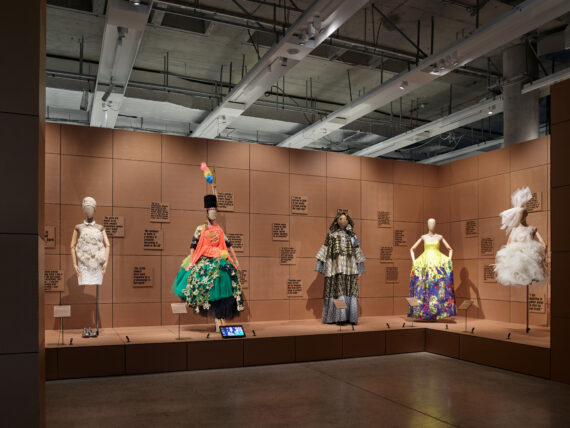
Mannequins with clothes. REBEL 30 Years of London Fashion. Photo with Design Museum permission, Andy Stagg.
The 90s are now history
I was interested to see that the bumsters have the zip and closure tab on the back. Throughout the Design museum London Fashion show, the clothes are on stands and not behind glass, which is always great for closeup peering, although there are many signs warning not to touch, which must be very tempting. In fact, many of these clothes are so very precious, being pieces from early collections, that it is a wonder they are displayed like this, come to think of it.
The brand’s also name pops up quite a lot, which is also fine, really. Texts mention how they helped other designers in a very material way, if you’ll forgive the pun. They donate fabric for catwalk shows, such as the silk given to S.S. Daley for his graduate collection in 2020. The trousers made with the fabric were later worn by Harry Styles in a music video, so the investment paid off. There is also a series of photographs of Alexander McQueen himself, taken at the young designer’s first NewGen presentation in 1993.
As an aside, now Sarah Burton has also moved on, it’s so strange to think of the business going on into the future, becoming a staid heritage brand with a misty origin story of the wild working class genius with a sad ending. Future fashion history enthusiasts will discover the background with some surprise, murmuring to one another “Oh, did you know that he was obsessed with bum cracks?” and they will be shocked and amused that in the far off 1990s people were not completely straight laced, just as now we find saucy postcards from the 1950s pin-up era rather amusing.
Displays with Hundreds of Garments and Artefacts
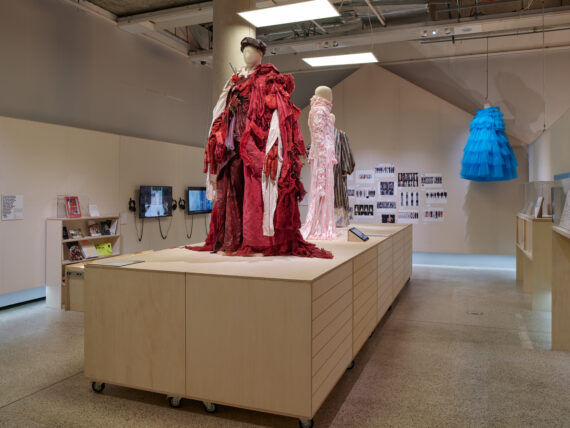
Mannequins with clothes. REBEL 30 Years of London Fashion. Photo with Design Museum permission, Andy Stagg.
There are various displays showing pieces which the designers consider to be definitive. A big screen screen showing a video of a 90s rave has many visitors grooving. A fun (and popular) interactive element is added with digital AI screens. These allow the visitor to try out makeup from the shows. It uses digital try on technology, which is popular with makeup brands. In this case you might be trying on a knight’s helmet or a blue splotch rather than a lipstick shade though. The end result is pretty flattering!
London Fashion at the Design Museum – Front Row at the Collections
At the end, viewers are invited to take a front row seat at a catwalk show. Mannequins march down a long raised catwalk while clips from the relevant show play behind them on a video screen. The effect is entrancing. Right at the end are Christopher Kane’s first neon bandage dresses. They are great, as they always were – and have a distinctly home made look about them. Sketchbooks show how the looks were envisaged.
Rebel: 30 years of London Fashion at the Design Museum is a show mostly of clothes made on a home sewing machine by people who are not professionals, and sketches on paper. It is mainly the pre-computer era – or perhaps those are the pieces I gravitate towards. NewGen designers are young, and often not rich. While some can afford to have their final collection made up by professional sample makers, putting a collection together is expensive enough, even if you do all the work yourself. Which is where the NewGen support comes in.
London Fashion at the Design Museum – Go and See it!
The exhibition is an emphatically great tribute to London fashion’s many talents, and will be deeply nostalgic for some. It’s fun, it’s interesting, it’s thought provoking and informative. Definitely go and see it.
Rebel: 30 years of London Fashion is guest-curated by BFC Ambassador for Emerging Talent Sarah Mower MBE and co-curated by Design Museum Senior Curator Rebecca Lewin. It is on at the Design Museum until 11th February 2024.



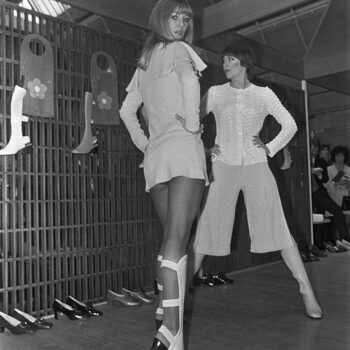
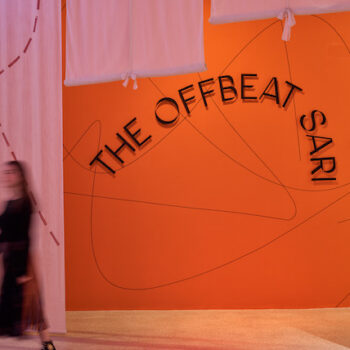
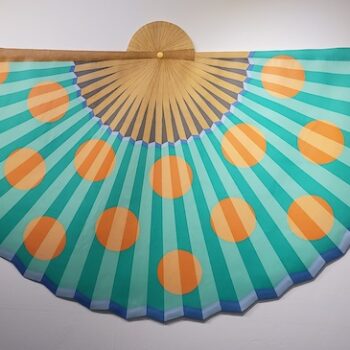
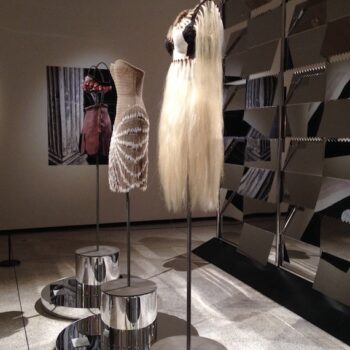
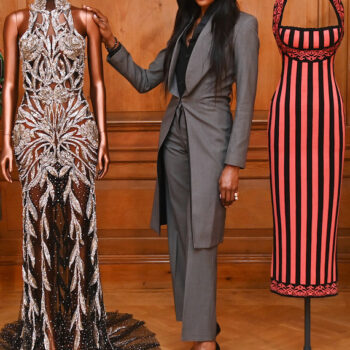

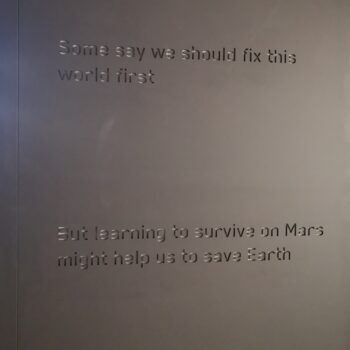
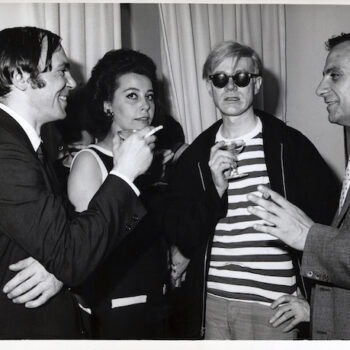
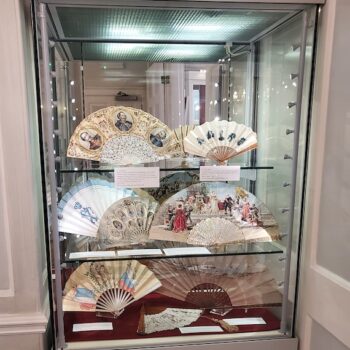
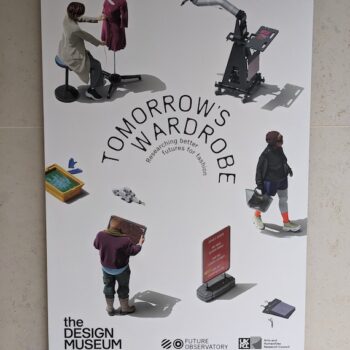
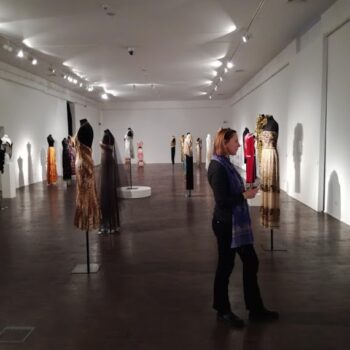
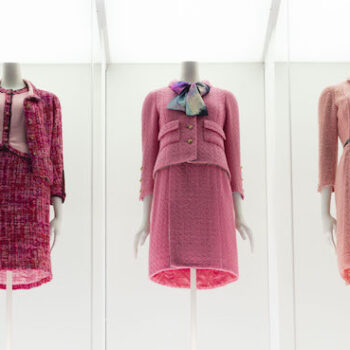
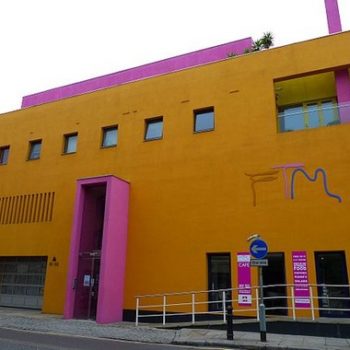
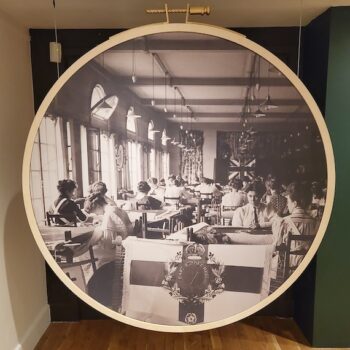

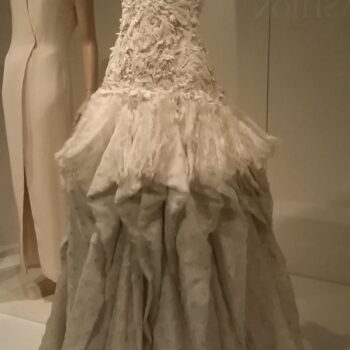
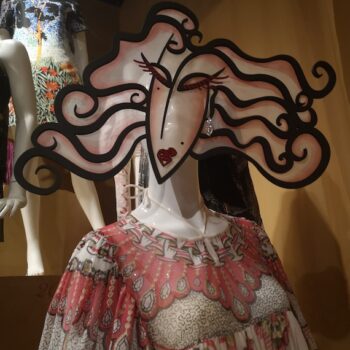
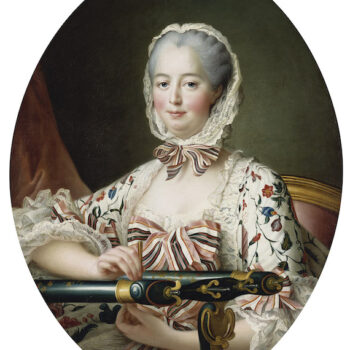
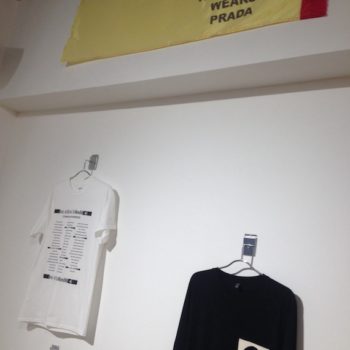
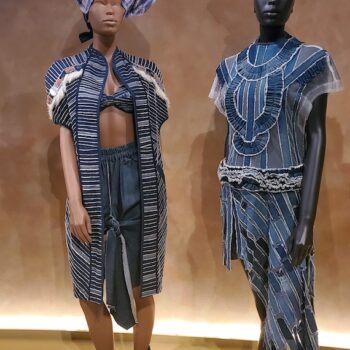
![LFWMAW18, By Philafrenzy (Own work) [CC BY-SA 4.0 (https://creativecommons.org/licenses/by-sa/4.0)], via Wikimedia Commons](https://www.blue17.co.uk/wp-content/uploads/2018/02/London_Fashion_Week_Mens_Strand_January_2017_02-350x350.jpg)

